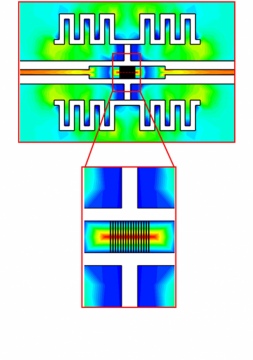Scientists from Imperial College London together with their colleagues in the Agency for Science, Technology and Research’s Institute of Materials Research and Engineering (IMRE) have developed a nano-antenna to produce powerful and high-efficiency electromagnetic Terahertz (THz) waves or T-rays.

The novel technique allows the researchers to create T-rays as an unprecedented powerful directional beam at room temperature, paving the way to develop compact, user-friendly, portable T-ray detectors and scanners at a low cost when compared to existing devices. According to the researchers, these T-ray devices can be used as portable computing, sensing and data communication gadgets for medical applications, as the T-rays are capable of sensing biological phenomena like increased blood circulation around tumor sites.
Using the new method, the scientists produced a powerful beam of T-rays by focusing light of various wavelengths on two electrodes, a pair of pointed metal strips isolated at a distance of 100 nm over a semiconductor wafer. The electrodes’ structure substantially improves the THz field and amplifies the waves produced by functioning like a nano-antenna. An interaction between a strong current transmitted between the electrodes and the light pulses’ electromagnetic waves produces the THz waves. The researchers can alter the T-rays’ wavelengths to produce a beam suitable for the scanning technology.
According to Dr Jing Hua Teng from IMRE, the technique is based on the novel nano-antenna on the semiconductor chip. A group of these nano-antennas is capable of generating more powerful THz fields, which produce a 100-fold power output when compared to that of current THz sources featuring traditional interdigitated antenna structures. These powerful T-ray sources provide higher resolution and more power to the T-ray imaging gadgets.